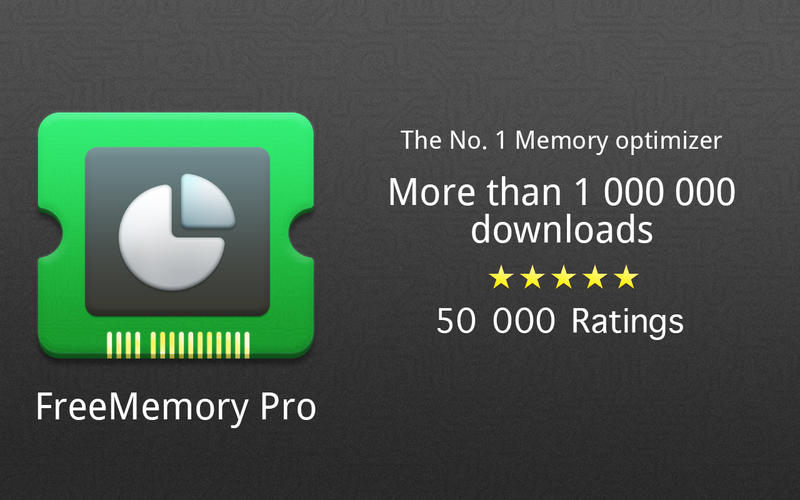

If the free memory number looks too low, you should quit some applications to free up memory. Now the bottom part of the window shows exactly how much free memory is currently available. This is a good way to see which applications are using the most memory on your Mac - the memory hogs are displayed at the top of the list.Ĭlick the System Memory button. (It’s in Applications → Utilities.) The window shown below appears.Ĭlick the Real Mem column header to sort the active processes by memory usage.
#Freememory pro how to
Here’s how to use Activity Monitor to monitor your Mac’s memory usage: Just follow these instructions to concentrate on the memory statistics. Don’t worry if you don’t understand what it all means. In fact, Activity Monitor presents so much information that it’s easy to get overwhelmed when looking at it. You can use this application to see how much RAM is currently free, how much RAM is currently allocated, and a whole lot more. By the time you get to the end of the article, you’ll be a memory-monitoring pro! Using Activity MonitorĪctivity Monitor is a free application that comes bundled with every Mac. This tutorial covers three of them: Activity Monitor, iStat Pro, and iStat Menus.

There are a couple different tools you can use to see how much memory your Mac is using. You can see how much RAM is currently available on your Mac and stop potential problems before they start! That’s why it’s important to monitor your Mac’s memory usage in real time.
#Freememory pro code
Of course, since RAM memory stores the code and instructions for OS X and any applications open on your Mac, running out of it can slow your Mac down, or worse. Most people have no idea how much RAM is installed in their Mac, or how much memory it is currently using. In short, you’d be driving blind - hoping, by chance, that everything would just work out okay.Īs ludicrous as this scenario sounds, millions of Mac users do essentially the same thing every day. You wouldn’t know how fast the car was going, how much fuel it had left, or whether or not the engine was about to overheat. Imagine driving a vehicle with no gauges on the dashboard.
#Freememory pro tv
You can use Activity Monitor to determine if your Mac could use more RAM.AirPort Apple Apps Backups Developer Education Email Hardware Internet iPad iPhone Mac Music Network Photos Security TV Weekend Wonk To display more columns, choose View > Columns, then choose the columns you want to show. Swap Used: The amount of space being used on your startup disk to swap unused files to and from RAM. Until this memory is overwritten, it remains cached, so it can help improve performance when you reopen the app. Select the Compressed Memory column, then look in the VM Compressed column for each app to see the amount of memory being compressed for that app.Ĭached Files: The size of files cached by the system into unused memory to improve performance. When your computer approaches its maximum memory capacity, inactive apps in memory are compressed, making more memory available to active apps. This memory can’t be cached and must stay in RAM, so it’s not available to other apps.Ĭompressed: The amount of memory that has been compressed to make more RAM available. Wired Memory: Memory required by the system to operate. To the right, you can see where the memory is allocated.Īpp Memory: The amount of memory being used by apps. Memory Used: The amount of RAM being used. Physical Memory: The amount of RAM installed. Memory pressure is determined by the amount of free memory, swap rate, wired memory, and file cached memory. Memory Pressure: Graphically represents how efficiently your memory is serving your processing needs. In the Activity Monitor app on your Mac, click Memory (or use the Touch Bar) to see the following in the bottom of the window:


 0 kommentar(er)
0 kommentar(er)
